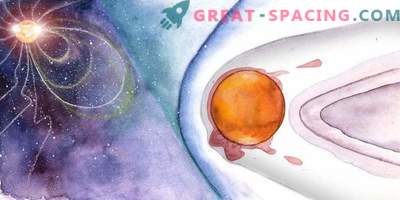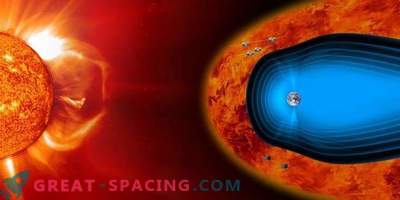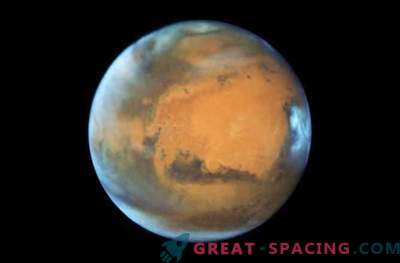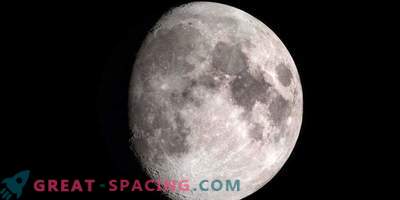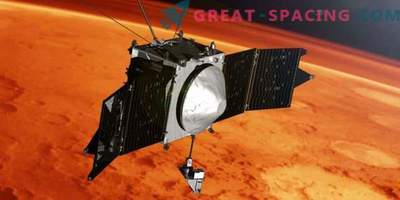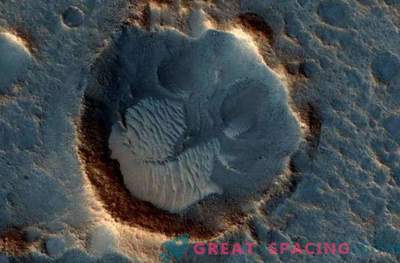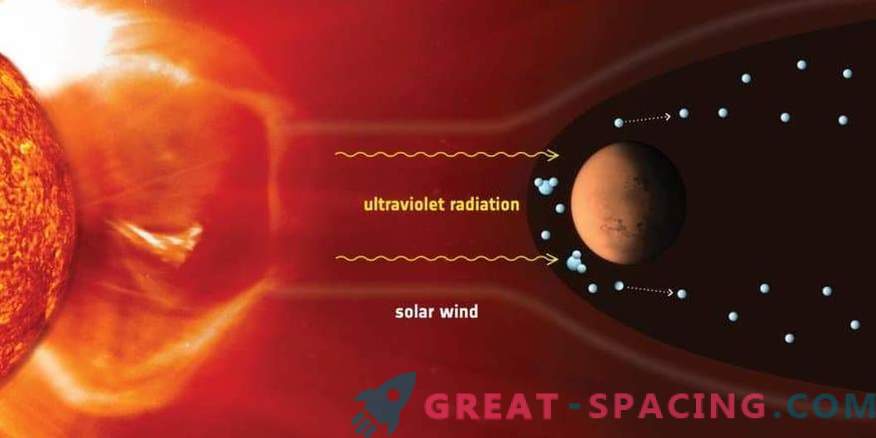
Illustration of ion leakage from Mars. UV rays from the sun separate electrons from atoms and molecules (blue particles), creating a region of an electrically charged ionized gas — the ionosphere. This ionized layer is in direct contact with the solar wind and its magnetic field to create an induced magnetosphere, slowing the particles
Low gravity and the absence of a magnetic field in the Red Planet lead to the fact that the outer atmospheric layer is easily removed by the solar wind. However, the latest review from Mars Express shows that stellar radiation plays an interesting role in this process.
It can be noted that the atmospheres of the rocky planets in the internal system evolved differently in 4.6 billion years. This moment is the key to understanding what makes the planet habitable. Earth has a huge supply of water, but Mars has lost most of the atmosphere at an early stage of development and turned into a cold desert. Let us also recall Venus, which has an atmosphere, but it is so toxic that, upon entry, it cannot withstand terrestrial apparatuses. One of the protective shells of the atmosphere is an internal magnetic field. It beats off the charged particles of the solar wind, cutting out the “bubble” (magnetosphere). Mars and Venus do not generate internal magnetic fields, therefore the ionosphere acts as the main obstacle. Solar UV rays separate electrons from atoms and molecules, creating an area of an electrically charged ionized gas — the ionosphere. On the Red Planet and Venus, this ionized layer is in contact with the solar wind and its magnetic field to create an induced magnetosphere, slowing the particles.
For 14 years, Mars Express has explored charged ions, such as oxygen and carbon dioxide, flowing from space to better understand the speed at which the atmosphere is moving away. The analysis showed that UV rays play a more significant role than previously thought.
In fact, scientists see that the increased production of ions caused by UV rays protects the planetary atmosphere from the energy carried by the solar wind. However, very little energy is needed for the ions to escape by themselves at low gravity. The ionizing nature of sunlight causes more ions than is removed by wind. This helps protect the lower atmospheric layer, but a “polar wind” is created. Because of the weak gravity, Mars cannot hold onto these ions, and they easily escape into space, despite being replenished from the solar wind.
Venus in gravity is more like Earth, so this process requires much more energy. The results suggest that the ion escape from Mars is limited to production, not energy. But on Venus is the opposite. That is, the solar wind has only a small influence on the volume of the Martian atmosphere.
This suggests that the magnetic field may not be very important to protect the planet’s atmosphere. Then the role goes to gravity, which determines how well it will hold on to atmospheric particles, regardless of the strength of the stellar wind.
